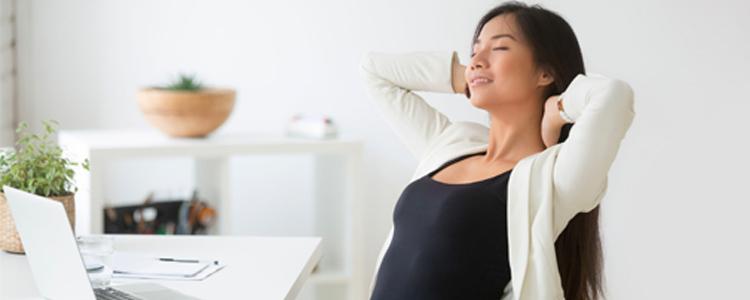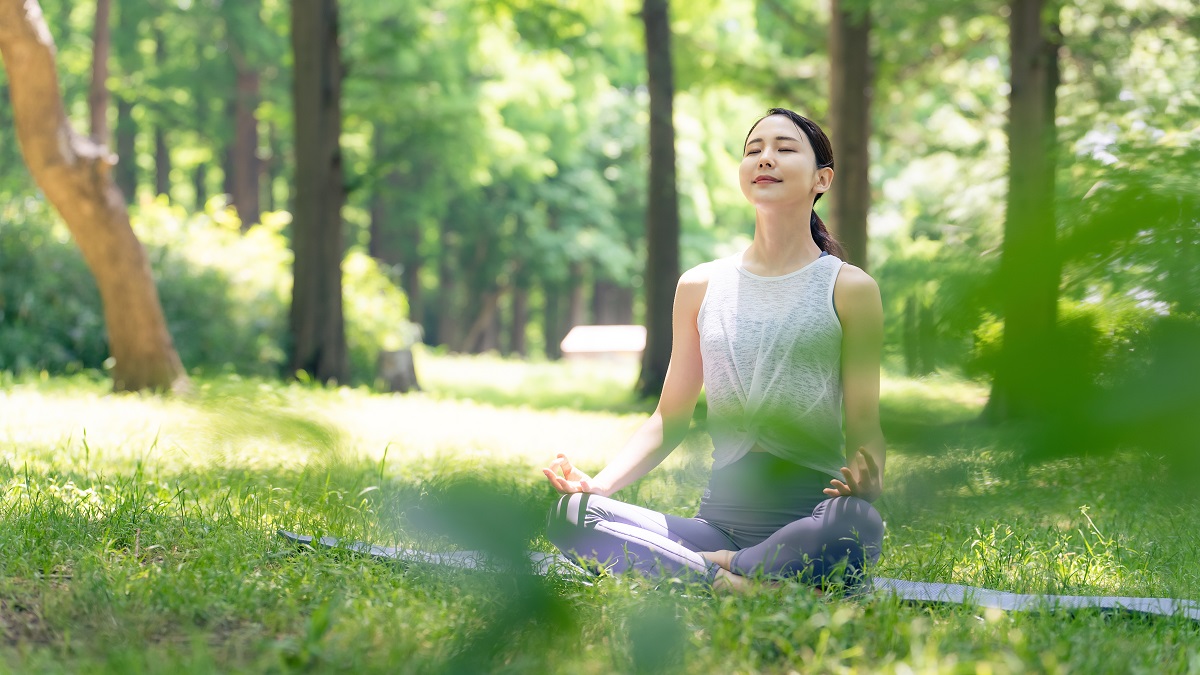- For SME and Groups
- For Individuals
Group Health Insurance
About Cigna Healthcare
Breathing Techniques to Calm the Mind, at Home and at Work
Breathing Techniques: Improve Relaxation, Focus & Health
Breathing techniques and their benefits
The science of breathing originated centuries ago, in cultures and civilisations all over the world. In Asia, the Chinese referred to it as qi, while the Hindus noted its importance via the term prana. In the West, it was rûah to the Hebrews and pnuema to the Greeks. No matter the terminology, the common fact remains that breathing has not only been noted for its importance for our survival, but also for its potential to improve our body and mind. But even with this wealth of knowledge reminding us to pay closer attention to our breathing, when was the last time that we have truly paid attention to the way we breathe, as well as the benefits that come with it?
The benefits of breathing exercises
For something as simple as breathing, there are a surprising number of benefits linked to having proper control of it. Since it is one of our most vital functions, it is only normal for us to breathe on autopilot for the majority of our day. However, this means that we may not realise it when we begin taking quick, shallow and irregular breaths that can increase stress and anxiety. Learning to be more aware and intentional with the way we breathe is therefore one of the easiest ways for us to improve our mental and physical health.
When it comes to our mental health, engaging in breathing exercises can help with our anxiety and stress management by calming us emotionally. When we focus our mind on slow, deep breathing, it helps us disengage from distracting thoughts and sensations, allowing us to calm down and relax. In fact, research has indicated that focused breathing causes brain activity in regions related to emotion, memory and awareness to show a more organised pattern as compared to what we usually experience during our normal resting state1. These exercises also engage our body’s Parasympathetic Nervous System (PMS), which is the “braking system” that is responsible for calming our body down both physically and emotionally2. When practised regularly, these breathing exercises can allow us to better control our emotions and reduce stress, even during high-pressure situations3.
Besides our mental and emotional health, controlled breathing can have lasting long-term benefits for our physical health. For instance, some studies4 suggest that slowing our breathing increases our body’s “baroreflex sensitivity” - the mechanism that regulates blood pressure via heart rate. Over time, this can result in better cardiovascular health which in turn reduces the risk of stroke, cerebral aneurysms and decreases the stress on blood vessels.

4 different breathing exercises and techniques
To help you get started on this mindfulness journey, we have selected 4 breathing exercises for you to try out. While they each instruct on varying focused breathing techniques, they are different in their intentions and the benefits that they offer. The key is to find one that works the best for you so that it will be more intuitive for you to revisit it whenever it is needed. This can be as simple as choosing a technique that is the most enjoyable for you or the easiest for you to remember, so that it will become something for you to look forward in your daily routine. Over time, these seemingly minor decisions can make a big difference in your habit-formation journey.
1. The 4-7-8 method
The 4-7-8 method is a form of Pranayama - an Indian wellness practice that capitalises on the 3 phases of breathing: inhalation, retention and exhalation. The numbers 4, 7 and 8 describe how long each phase should last.
Before you begin, start by sitting up straight in a comfortable position. Continue with these steps:
- Place the tip of your tongue behind your front teeth
- Expand your diaphragm and inhale slowly through your nose, while simultaneously counting to 4
- After inhaling, hold your breath, but this time, count to 7
- Then, while keeping your tongue in the same position, open your mouth slightly and exhale slowly while counting to 8
2. Box Breathing
The box breathing exercise is another technique that helps put you in greater control of your automatic breathing patterns. This allows for optimal health and better performance in stressful situations.
Here is how you can try it out:
- Start by sitting up as straight as possible
- Next, close your eyes and exhale all the breath out of your lungs before you begin
- The following step is to visualise an imaginary box in your head
- Once you have gotten it down, inhale slowly through your nose and count to 4, while visualising travelling up the side of an imaginary box
- Once you have reached the top of the box, close the valve at the back of your throat and hold your breath for the same count of 4, this time visualising travelling along the roof of the imaginary box
- When you get to the other side of the box, exhale slowly through your nose for the same count of 4 and visualise travelling down the other side of the box
- Finally, relax for another count of four while visualising travelling along the side of the box back to your initial starting point
- Repeat the process for a minimum of 5 minutes for a complete breathing exercise
The main point of this technique is for us to learn how to visualise and gain greater control over our breathing no matter where we may be.

3. Progressive Muscle Relaxation (PMR)
We are often so engrossed in the day-to-day tasks that we are not actually aware of the amount of tension that we are holding in our bodies, which is why it is vital for us to take a break ever so often to check in with ourselves and relieve that strain.
This is where the Progressive Muscle Relaxation (PMR) technique comes in. PMR works by using our breath to tense up and subsequently release individual muscle groups and body parts. Here’s how:
- First, find a spot where you can sit up straight and relax
- Start by inhaling and closing your eyes tight for 4 to 10 seconds
- Next, exhale and relax your eyelids suddenly and completely. Give yourself a 10 to 20-second break before moving onto the next muscle group
- You can repeat this technique with any muscle group in your body, including your nose, cheeks, jaw, neck, shoulders, chest, abdomen, arms, hands, buttocks, legs and feet. To help you keep track, we recommend starting with the eyes and taking a top-down approach
4. Ujjayi / Victorious Breathing
The last breathing exercise that we will be covering is well-known within the yoga community as Ujjayi or victorious breathing. Ujjayi is a Sanskrit term which translates to ‘one who is victorious’. In this context, Ujjayi breathing can therefore refer to the ‘breath of victory’. This can mainly be derived from the technique’s purpose of bringing its participants a sense of confidence and upliftment.
To give it a shot, follow these instructions:
- Begin by sealing your lips and taking in a slightly deeper breath through your nose. Keep in mind that your face should be relaxed and not tense while you are doing so
- With your mouth closed, control your exhalation by breathing out slowly through your nose while constricting the muscles at the back of your throat
- If this is done properly, you will notice a deep hissing sound resembling that of calm, rolling waves. This unique characteristic is also what gives the technique its alternative name of ‘ocean breath’
- Repeat the steps above for as long as you deem necessary to experience the benefits of the exercise
Get a Quote Today
Let our consultants prepare and arrange a customised group health insurance plan that best meets your needs.
Over to you
Like most healthy habits, consistency is key. So when you have found your preferred technique, consider making breathing exercises a part of your daily routine. Simply setting aside 10 to 20 minutes each day for it can go a long way in helping you to establish a habit that will be beneficial to your physical and mental health in the long run. You can also consider taking additional steps that will make it easier for you to stay on track, such as performing your breathing exercises in a place that is special, calm and comfortable. These little adjustments can give you something to look forward to, and even provide you with the motivation you need to be consistent in your newfound habit. It could take some time for you to figure out a balance that will best benefit you, but you might just find the benefits to be worth the effort.
Resources:
1 DiSalvo, D. (2017). How Breathing Calms Your Brain, And Other Science-Based Benefits Of Controlled Breathing. Forbes.
2 Nazish, N. (2019). How To De-Stress In 5 Minutes Or Less, According To A Navy SEAL. Forbes.
3 Zope, S., & Zope, R. (2013). Sudarshan kriya yoga: Breathing for health.
4 Joseph, C., Porta, C., Casucci, G., Casiraghi, N., Maffeis, M., Rossi, M., & Bernardi, L. (2005). Slow Breathing Improves Arterial Baroreflex Sensitivity and Decreases Blood Pressure in Essential Hypertension
Related articles
Contact Us
Popular Links
Resources
Connect with us
© 2025 Cigna Healthcare. All rights reserved.
Cigna Europe Insurance Company S.A.-N.V. Singapore Branch (Registration Number: T10FC0145E), is a foreign branch of Cigna Europe Insurance Company S.A.-N.V., registered in Belgium with limited liability, with its registered office at 152 Beach Road, #33-05/06 The Gateway East, Singapore 189721.
The Cigna Healthcare name, logo, and other Cigna Healthcare marks are owned by The Cigna Group Intellectual Property, Inc. licensed for use by Cigna Corporation and its operating subsidiaries. All products and services are provided by or through such operating subsidiaries, and not by Cigna Corporation. Such operating subsidiaries include Cigna Europe Insurance Company S.A.-N.V. Singapore Branch.

